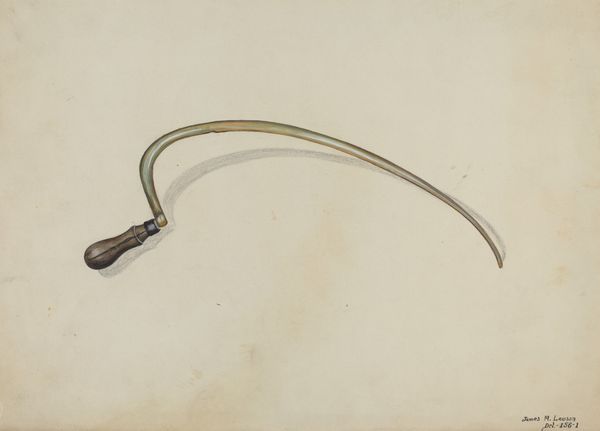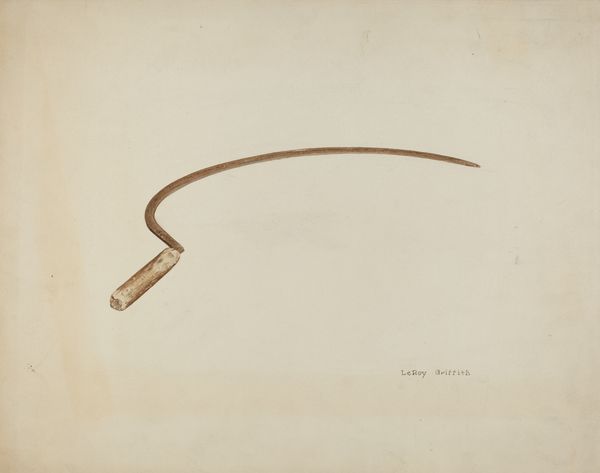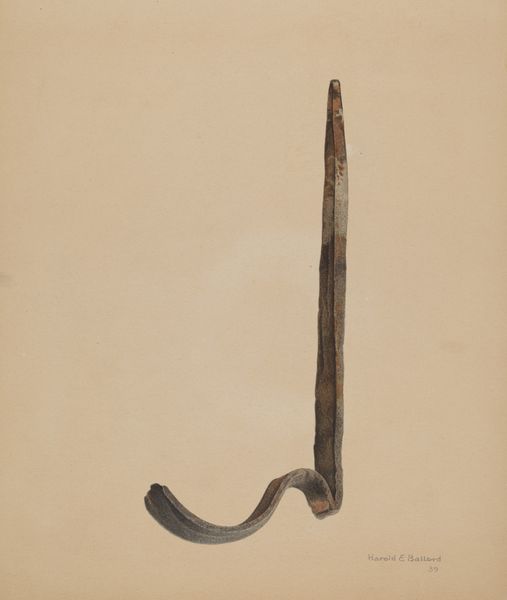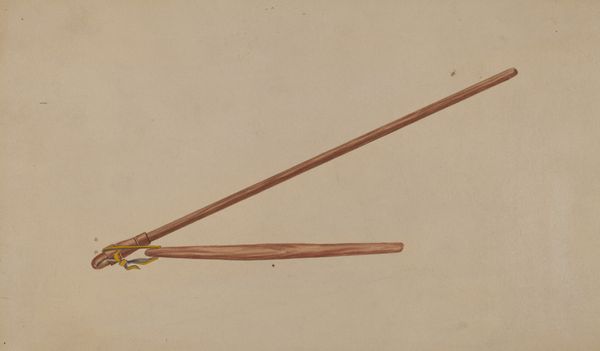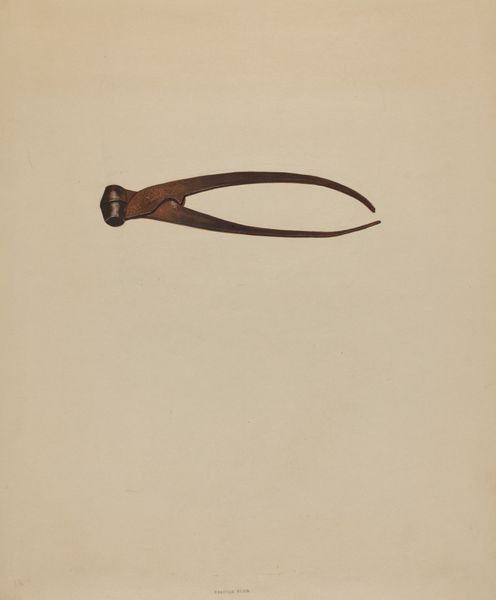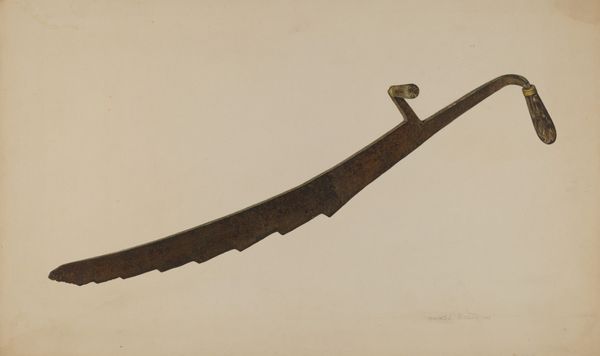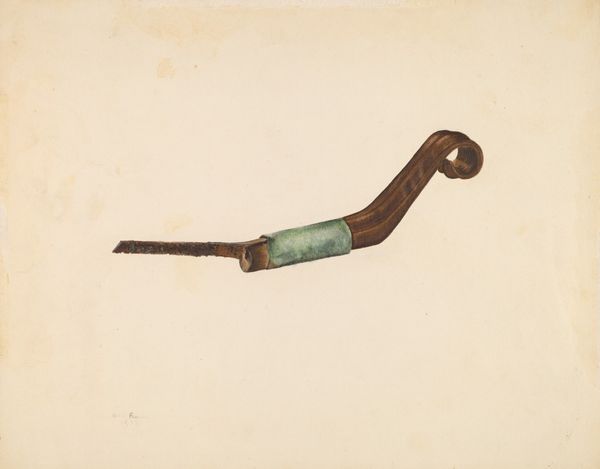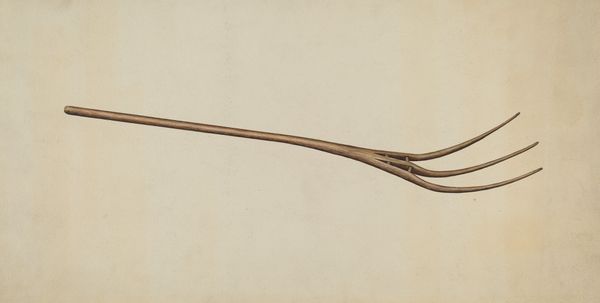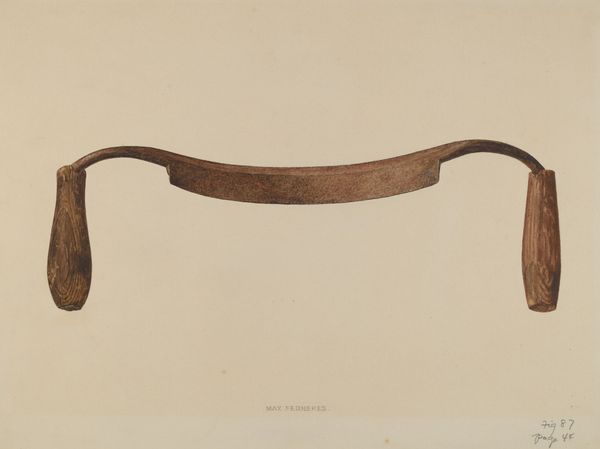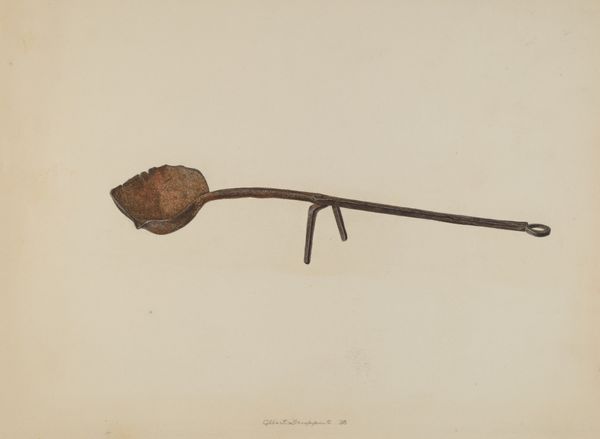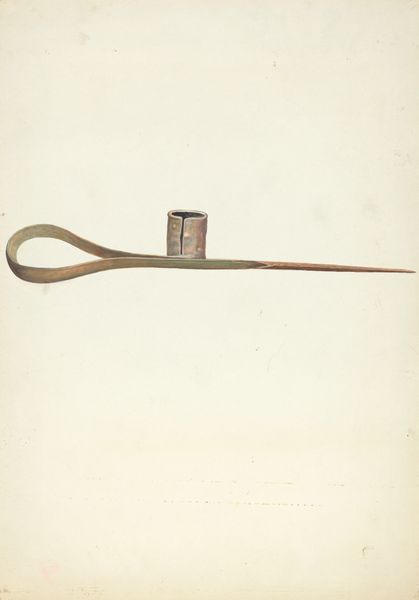
drawing, watercolor
#
drawing
#
water colours
#
watercolor
#
line
#
watercolour illustration
#
watercolor
#
realism
Dimensions: overall: 31.7 x 46.3 cm (12 1/2 x 18 1/4 in.) Original IAD Object: 19 1/2" long
Copyright: National Gallery of Art: CC0 1.0
Curator: Frank Gray’s “Wrought Iron Sickle,” from around 1940, is rendered in watercolor. I'm interested to get your initial take. Editor: There's a quietness, almost melancholy to this watercolor. The neutral background really emphasizes the stark form of the sickle itself, drawing focus to its sinuous curve. Curator: Absolutely. A tool like this tells so many stories about labor, about the social and economic realities of rural life. Consider how much agricultural work, historically and even presently, is tied to gender and class disparities. Editor: The composition is fascinating too. The curve of the blade leads the eye, almost forcing a reading from the handle outward to its tip. I am thinking about the artist’s calculated use of negative space. The object’s relation to the surrounding whiteness emphasizes its materiality. Curator: And we cannot ignore the possible symbolism. The sickle has very charged connotations. The reference to the Communist symbol links it with the struggle of the working class and land reforms of the 20th century, and it might spark debate given how socialism evolved. Editor: That’s an important point, although it makes me consider Gray’s careful, almost detached, presentation. By rendering it as a static, isolated object, does Gray risk stripping it of that revolutionary power? Curator: Not necessarily. In isolating it, Gray invites us to analyze its fundamental form and function. The choice of watercolor softens what could be an imposing or aggressive symbol, asking us to consider it outside of just its political context, acknowledging all of the layered narratives that form a nation's identity. Editor: So, we see how Gray uses form and technique to distill complex political realities, while simultaneously inviting a visual appreciation. Interesting, isn't it? Curator: Indeed, the beauty of its presentation allows room to dissect these difficult realities, connecting visual engagement and historical understanding.
Comments
No comments
Be the first to comment and join the conversation on the ultimate creative platform.
